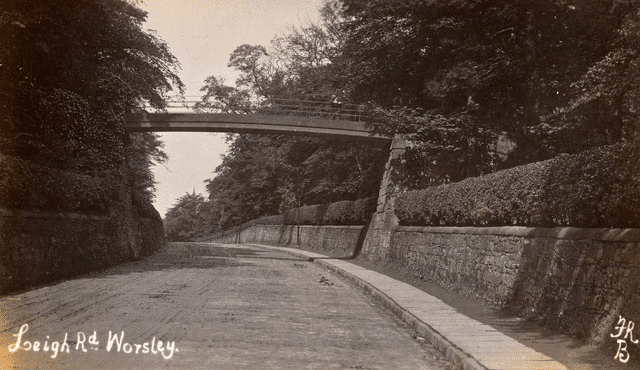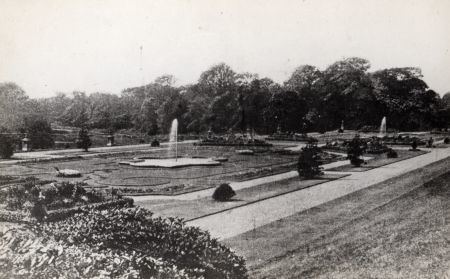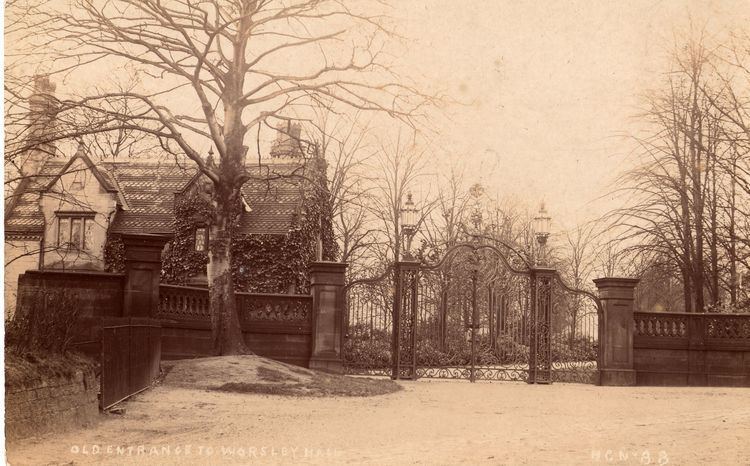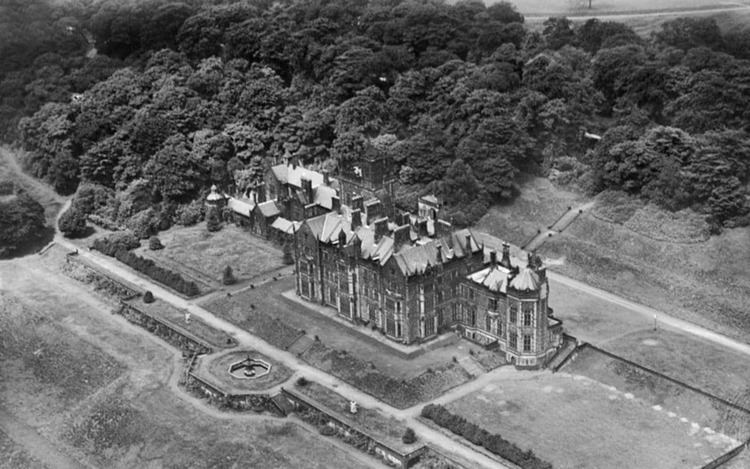Worsley paranormal group evp captures wildwings worsley new hall
Worsley New Hall is a former mansion and gardens located by the Bridgewater Canal in Worsley, the metropolitan borough of the City of Salford, around 8 miles (13 km) west of Manchester in Greater Manchester, England. As of 2016 the gardens are being renovated, and will open as RHS Garden Bridgewater in 2019.
Contents
- Worsley paranormal group evp captures wildwings worsley new hall
- Evp ghost noises worsley new hall by worsley paranormal group
- Hall
- Gardens
- References

Evp ghost noises worsley new hall by worsley paranormal group
Hall
In the 17th century, Worsley Old Hall was constructed as the main house on Worsley Estate. The Estate was inherited by Francis Egerton, 3rd Duke of Bridgewater in 1748. The Duke commissioned the construction of Brick Hall, a Georgian-style building, which was built in the 1760s.

Brick Hall was replaced by Worsley New Hall, which was built for Francis Egerton, 1st Earl of Ellesmere. It was one of the biggest houses designed by Edward Blore. The foundations of the building were started in 1839, with the first stone laid in April 1840; the building was completed by 1846. The construction of the New Hall cost just under £100,000 to build at the time. Brick Hall was demolished between December 1844 and August 1845, and Leigh Road now runs over the former site of the building.

Worsley New Hall was an Elizabethan Gothic-style mansion, faced with Hollington stone. The Hall was three stories high and had a symmetrical main block, with a wing for the family on one side and a servant wing and a tower on the other side. The plans are held at the Victoria and Albert Museum.

Queen Victoria visited the hall twice. The first visit was in October 1851, and was the first royal visit to the area in 150 years. Queen Victoria, accompanied by Arthur Wellesley, 1st Duke of Wellington, arrived at a newly-built landing stage at the hall on a specially-built Royal Barge via the Bridgewater Canal, which had been dyed blue for the visit. During the visit she met James Nasmyth at the hall. The second visit was between 29 June and 2 July 1857 alongside visiting the Art Treasures Exhibition, Manchester 1857. She planted a North American giant redwood tree in the hall's lawn in memory of the Duke of Wellington, and Princess Frederica Maria of Prussia planted an English Oak at the same time. However, the redwood did not grow well in the British climate.
Edward VII and Queen Alexandra visited when Edward was Prince of Wales in 1869. On 6 July 1909 they visited the hall to inspect the Territorial Army's East Lancashire division on hall grounds to the south of the Bridgewater Canal, after they had opened the Manchester Royal Infirmary.
During World War I, John Egerton, 4th Earl of Ellesmere lent the hall to the British Red Cross, and it was used as a 132-person hospital, with the hall rooms converted to wards, sitting rooms and dining rooms, with food provided by the kitchen gardens, and other gardens used for recreation. The hospital closed in 1919.
In 1920, death duties led the 4th Earl to start auctioning off various items of furniture and fittings from the hall. Other furniture, and paintings, were relocated to Mertoun House, Stetchworth Park and Bridgewater House, Westminster, which were also owned by the Earl. The hall's library, and surplus furniture, were sold at auction in April 1921.
In 1923 the estate was sold to Bridgewater Estates Limited, a group of Manchester businessmen, for £3.3 million. The company attempted to sell the hall in the 1920s and 1930s, but were unsuccessful.
During World War II the War Office requisitioned parts of the hall and the grounds. The 2nd and 8th Battalions of the Lancashire Fusiliers occupied the site in 1939 and 1940, with around 100 troops based at the site, using the hall's basements as air raid shelters, and digging training trenches in the grounds. In 1941 and 1942 the 42nd and 45th County of Lancaster Home Guard Battalions used the site, practising street fighting in the hall, and storehouses for explosives were constructed in the grounds of the hall. The lake and other parts of the grounds were used for scouting, and were known as the Middlewood Scout Camp. The hall also housed Dunkirk evacuees, and in 1944 American soldiers were based at the hall, preparing for D-Day.
In September 1943 a fire badly damaged the top floor of the hall. The building had also been damaged during the military occupation, with windows broken, interior furnishings possibly used for firewood, and the Leigh Road entrance gates were damaged. The hall was also suffering from dry rot and subsistence due to mining.
Calls for tenders to demolish the building were sent out in 1944 and the hall was sold to a scrap merchant from Ashton, Sydney Littler, for £2,500. Demolition started in 1946, and the hall was demolished to ground level by 1949, with debris used to fill in the basements. 800 tonnes of stonework from the hall was used to construct council houses in Southfield, Yorkshire. A footbridge over Leigh Road was demolished at the same time.
In 1951 the War Office requisitioned part of the site again, and built a reinforced concrete bunker where the servants' wing had been, along with two anti-aircraft radar masts. The War Office then purchased the site of these in 1956. The Royal Navy used the bunker as a food store between 1958 and the early 1960s. It was sold to Salford Corporation in 1961, and was used by them and the Lancashire County Council as a control centre. In 1968 ownership passed to the Greater Manchester Fire Service; in 1985 they leased it to a local gun club as a shooting range.
Archaeological digs in December 2011 showed that some of the basement of the hall still exists. In March–December 2012, the University of Salford carried out archival research about the hall.
Gardens
Worsley New Hall's formal landscaped gardens were set out in the early 1840s, with further developments over the next 50 years.
It included terrace gardens constructed by William Andrews Nesfield, who started work on the gardens in 1846. Six terraces existed by 1857, separated by stone balustrades, and linked with steps and gravel paths. The top two terraces were set out in a Parterre de Broderie style. The second terrace was a copy of a design by Dezallier d'Argenville; at the centre of this terrace was a bronze fountain designed by Val d'Osne that was previously displayed at The Great Exhibition in 1851. This fountain, along with two others on the fifth terrace, used water from Blackleach reservoir. In the 1870s the parterres were modified, as they had declined in popularity due to their high maintenance requirements.
A croquet lawn and tennis court were near to the terraces. To the south of the terraces was landscaped parkland followed by a boating lake. The lake was enlarged by 1875, and featured an island grotto accessible by a footbridge.
To the west of the terraces, woodland separated the grounds of the hall from a gardener's cottage and kitchen gardens. The kitchen gardens were constructed in the early 1840s, and provided vegetables, fruit and flowers to the Hall. By the end of the 19th century the 10-acre kitchen gardens gained an outer wall, making it one of the largest walled gardens in the UK. The wall featured flues to heat the gardens to avoid frost, using a Trentham design. The kitchen gardens also featured potting sheds, and glasshouses containing cucumber plants, melons, grape vines and peach trees.
The Gardener's Cottage housed the head gardener for the estate. It was constructed in 1834, and was designed by Edward Blore. The Bothy was built in the late 19th century to house unmarried gardeners; a boiler in the cellar of the Bothy provided heating to the kitchen garden glasshouses. Both the Cottage and the Bothy are still standing.
The gardens fell into disrepair after the first world war, with the formal gardens becoming overgrown, and weathering damage to the fountain. By the early 21st century they were owned by Peel Land and Property and Salford Council. In 2012 Peel were planning to construct a hotel where the New Hall was previously located, along with a reconstruction of the gardens, and the construction of a golf course.
In October 2015 it was announced that the Royal Horticultural Society would renovate the 156-acre garden at Worsley New Hall, with a planned opening date of 2019 under the name "RHS Garden Bridgewater". It will be the RHS's fifth garden, and is 156 acres (0.244 sq mi) in size. The renovation will cost £30 million, of which £19 million is from Salford Council, and it aims to be visited by around 1 million people per year once completed.
The new gardens are being designed by Tom Stuart-Smith. Initial plans include a new visitor building at the south end of the gardens; a new lake; a perennial meadow entrance garden set out as a web; a water garden; a new learning centre; and a café terrace. Additionally, the plans include the reconstruction of the walled garden, which will feature therapeutic, vegetable and flower gardens. Terraces between the ornamental lake and the former hall will be reinstated, as well as the tree-lined approach to the estate.
